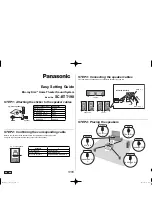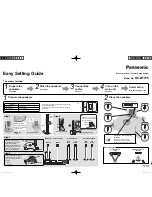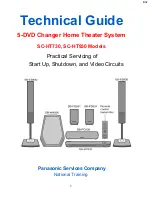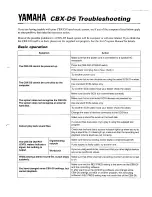
.
INTEGRA Solar User Manual Page - 6 of 8
www.cleanenergyireland.ie
2.4 Going on Holiday
Your solar system is designed to stagnate at high temperatures during times of inactivity. There are several built
in safety functions to protect user and solar system during periods of inactivity, for example:
Maximum Temperature setting on solar controller.
Solar Expansion vessel.
Pressure relief valve.
If there is planned long periods of inactivity (>5 weeks) during possible high summer temperatures then the
owner should consult with his/her solar suppliers/installers and fit a heat dump.
2.5 During and After Power failure.
If a power failure has occurred (or power otherwise temporarily removed) and the power is returned to the
controller then the solar system will resume normal service unless the collectors have reached very high
stagnating temperatures. If the collectors are in a stagnation state then the controller will recognise this and will
not permit the pump to operate. The controller will resume normal service when the collectors have cooled to a
safe operating temperature. There will be a flashing warning sign on the controller LCD display when the
collectors are at a very higher temperature, this is normal and the warning sign will be removed when the
collectors cool.
2.6 During Extreme cold Weather.
The solar system is filled with Anti-freeze which has a normal freezing point of -20 and -30 degree Celsius.
If the solar system is properly maintained then the owner should have no concern during very cold weather.
If the system is poorly maintained the owner should contact the installer if very cold weather is expected.
3.0 Health and Safety.
3.1 Hot Solar Pipes.
The flow and return pipes to the cylinder can get very hot; these pipes should be fully fitted with a solar
insulation. It may not be possible to fully insulate the fittings in the cylinder and care should be taken not allow
children to touch these pipes.
3.2 Anti-Scald Protection
An Anti-Scald valve mixes cold water to very hot water making the water exiting the cylinder safe for use. The
device can provide various temperatures (normally between 30
C and 70
C, normally 60
C) and can be varied
by owner. The owner should ensure an anti-scald valve is fitted to where the hot water exits the cylinder.
3.3 Legionella Control
Legionella are bacteria which are present in trace quantities everywhere in water and which can reproduce
rapidly in hot water at favourable temperatures (around 35
C). These bacteria present no danger to humans in
the gastro-intestinal system; however they can be inhaled in minute droplets (as an aerosol) into the lungs, for
example under a shower and can cause clinical symptoms like pneumonia which may lead to death. Ill and
elderly people are particularly at risk. Legionella control applies to all water heating facilities and not just solar.
The owner should ensure there is a thermostat fitted to the cylinder which is wired to a timer and back to the
boiler, the cylinder thermostat should be set to 60
C. The timer should tell the boiler to heat the cylinder every
day between 5pm and 6pm -assuming the solar has not heated the cylinder to 60
C.


























